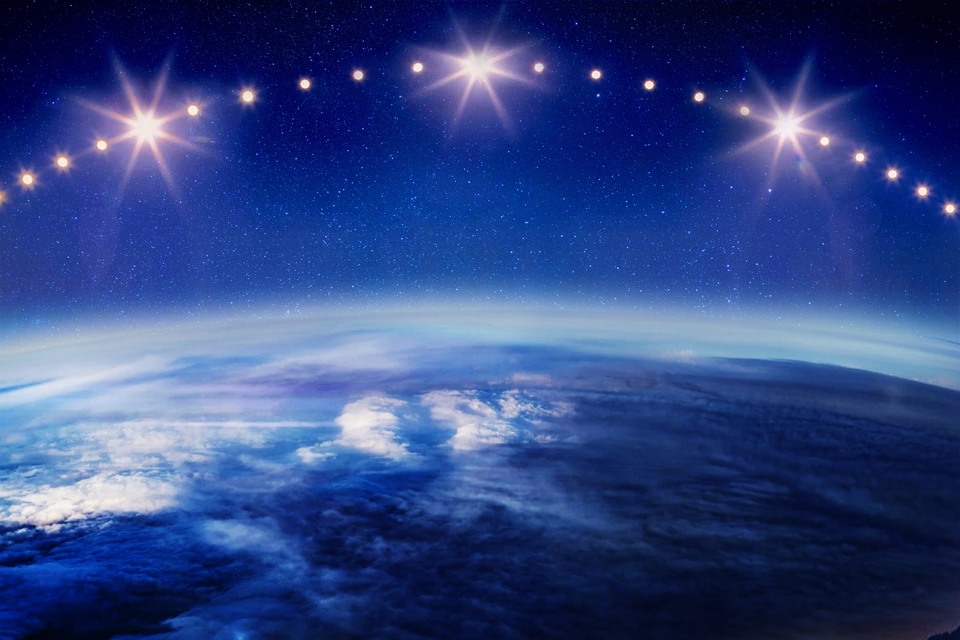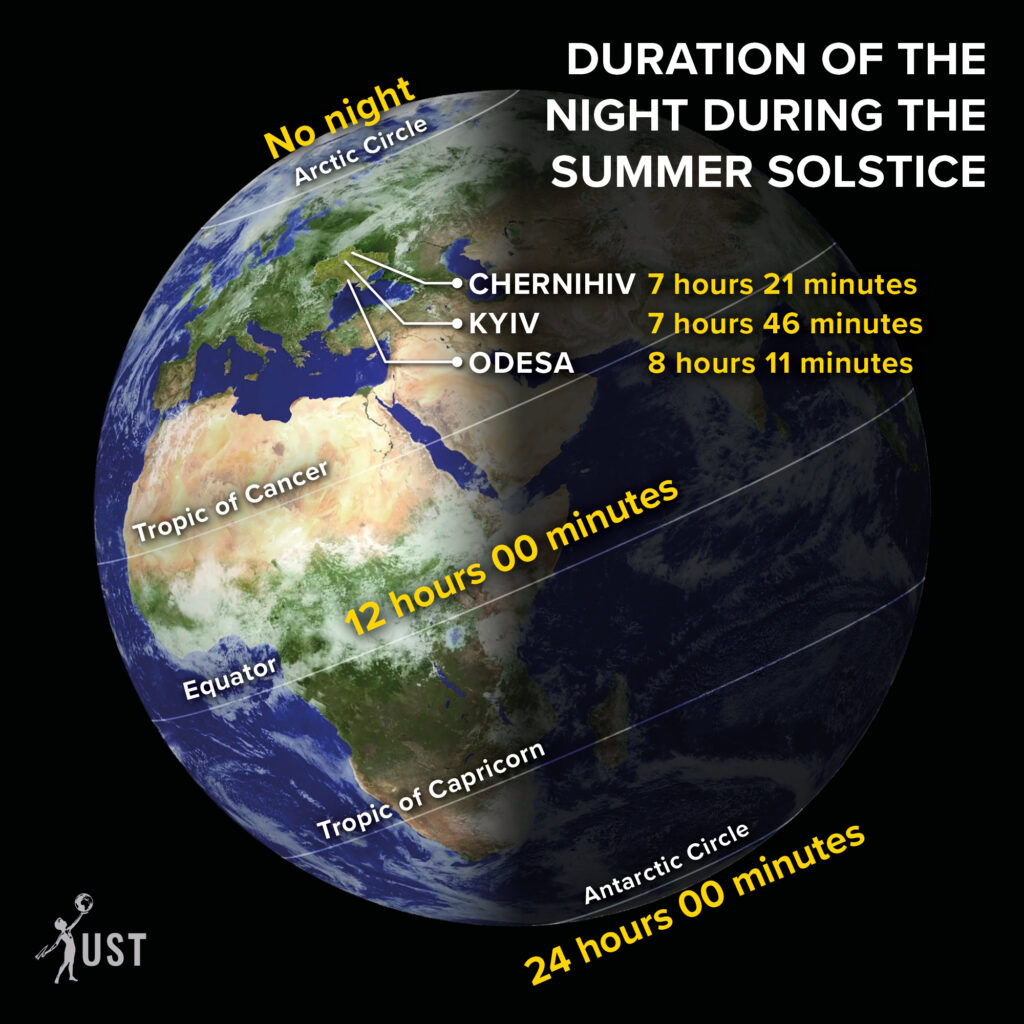June 21 will be the summer solstice. Everyone knows that it happens every year and that at this time the daylight is the longest, and the night, on the contrary, the shortest. But not everything with the June solstice is so easy…

1. Is this really the shortest night of the year?
During the June solstice, the night lasts 7 hours 46 minutes 40 seconds. But this is at the latitude of Kyiv. In Chernihiv, it will last 7 hours 21 minutes, in Odesa — 8 hours 11 minutes. Beyond the Arctic Circle, it is impossible to say anything about the duration of the night, because it will not come there.
But in the Southern Hemisphere, the opposite is true. Here the June solstice is winter, the nights on this date are the longest of the year. At the same time, the farther away from the equator, the shorter the daylight hours. Beyond the southern Arctic Circle, the sun will not rise at all on this day.
2. Does the summer solstice always occur on June 21?
The statement that the summer solstice occurs on June 21 is not entirely accurate. In a leap year, it usually occurs on the 20th. And if the night from June 21 to 22 is usually the shortest, then in such years as 2024, it is the night from June 20 to 21.
This is due to the fact that the duration of the Earth’s orbit around the Sun is not exactly equal to 365 days. It is longer by almost 6 hours, and to compensate for this, one day is added at the end of February. Because of this, the solstice moment “jumps”.
3. When will the summer solstice take place in 2023?
On its own, the summer solstice in the Northern Hemisphere (it is also winter in the Southern Hemisphere) occurs at the moment when the center of the solar disk reaches the northernmost point of the ecliptic (then its declination exceeds +23°26′). And this moment can be determined with accuracy not only to the hour, but also to the minute.
In 2023, this moment will come on June 21 at 04:57 p.m. Kyiv time. It does not coincide with the astronomical noon, since the solstice is determined by the position of the Earth in orbit, and not by its rotation around its axis.
4. How is the holiday of Ivan Kupala (St. John Baptist’s day) connected with the solstice?
A huge number of diverse traditions are associated with the summer solstice among the peoples of Europe. In Ukraine, this is primarily the holiday of Ivan Kupala. Officially, it is the Christian holiday of the Nativity of John the Baptist; and until recently was celebrated in Ukraine on July 7. However, this situation was typical only for the XX century because of the confusion that arose due to the differences between the Julian and Gregorian calendars, as well as the influence of the communist authorities and the Orthodox Church.
In fact, it is a pagan midsummer holiday. And now in Ukraine, the real date of the celebration has been returned to it — June 24. On this day, the Sun, which has not changed its maximum height above the horizon for several days, gradually begins to decline.

5. How is the “Tropic of Cancer” connected with the summer solstice?
The parallel with latitude 23°26’15” is called the Tropic of Cancer. It is interesting because it is the northernmost line on the surface of the globe, on which the Sun is exactly overhead at noon (at the zenith). However, this happens only once a year — during the June solstice. At the time of the birth of astronomy, our luminary was located in this zodiac constellation.
Traditionally, the point of the summer solstice is often designated by the sign of Cancer. However, due to the precession of the earth’s axis, it has no relation to this constellation for a long time. During the last centuries, the summer solstice point was in the constellation Gemini, and in 1988 it moved to Taurus.
Follow us on Twitter to get the most interesting space news in time
https://twitter.com/ust_magazine

